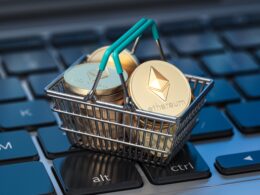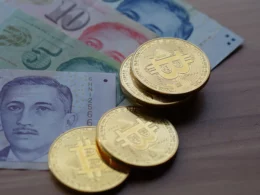To spend and enjoy, or to save and invest? This doubt is the crux of any individual with capital since the dawn of monetary systems. It’s even the subject of some of one of the most famous biblical parables – a sign of the longevity of this debate.
In crypto’s case, this problem is simplified by the fact that hardly any of its current adopters use tokens as true monetary substitutes. After all, apart from a few pioneering businesses and countries, there’s a long way to go before the economy fully incorporates ledger-based solutions in a day-to-day capacity.
In fact, most crypto enthusiasts in 2022 have purchased their coins either as a speculative investment or out of faith in the underlying technology backing tokenised blockchains – in the hope that this technical edge will bring gradual adoption over the years to come. And, in turn, appreciation – a philosophy that many call out as being nearly identical to the self-admitted speculators.
However, precisely due to the ever-evolving and cutting-edge nature of most cryptocurrency projects, the amount of different ways tokens can be invested is expanding by the minute. New financial products are being launched on the market weekly, often with big knowledge gaps to fill for experts closely following the industry, let alone retail customers.
Choosing the right investment vehicle can be downright overwhelming for new entrants to the scene, and can lead to some very bad decisions or, on the opposite end of the scale, information overload and disengagement.
Therefore, we want to help you with the basic first step of this long and personal journey of discovery of the market’s offerings – should you invest your money through trading or staking? And what do either of those things mean?
Trading: Navigate The Stormy Seas

Tales of traders and of trading profits are often what draw initial interest from wannabe crypto holders.
After all, no security, commodity or asset of any kind has ever recorded the year-on-year growth delivered by Bitcoin during the past decade, let alone the ridiculous uplifts some of the smaller projects or memecoins enjoyed during 2021. What the new year has highlighted for many new adopters, however, is that this growth is hardly ever linear and requires a serious degree of emotional control to follow it.
The idea behind the trading approach to cryptocurrencies is to exploit the massive price fluctuations and market capitalisation swings to one’s advantage, by attempting to predict their patterns and behaviour through a variety of types of analysis – chart, price, fundamentals, on-chain and even social media sentiment.
The traders’ gold mine is a successful attempt at ‘buying low and selling high’ – that is, correctly identifying and actioning both the historical peak of a certain asset’s valuation and the moment that same price hits the very bottom, to optimise the revenue obtained during the swing.
This leads traders to essentially try and navigate the ‘waves’ formed by the charts up and downswings, much like a captain in a stormy sea would need to time every single manoeuvre of his boat so it isn’t dragged down or capsized by the next wave.
As can be inferred, this is a very time and resource-intensive approach to maximising profit and, most importantly, it requires a great deal of knowledge and skill – as drowning in a sea of false hunches and misinterpreted data is easier than one would think. Especially given the proliferation of all sources of ‘trading advice’ we can see – be they YouTube stars, Reddit communities or friends, few are likely to provide advice tailored to one’s specific needs and risk profile. And furthermore, as the saying goes, none are financial advisors.
If this wasn’t hard enough, trading is very much a zero-sum game – meaning for every winner, there needs to be a loser. In a market populated by algorithmic and high-frequency trading (with all the ethical complications those approaches bring along), you could very well be betting your money against an army of AI supercomputers with much much more time on their hands than you’ll ever have.
Is this risk even worth it? Not really, unless you’re part of the lucky 5% – it is estimated that up to 95% of crypto day traders lose money!
By this point of your reading, you might be begging for an alternative – you’re in luck there.
Staking: A Safe Harbour

Not all captains brave the stormy seas, actually. Some prefer to hide their blockchain doubloons in a safe haven: a staking platform.
Staking is a concept that we have analysed before in-depth, and which is liable to provide profits much like day trading, but without a shred of the same amount of risk.
Instead of representing a sort of bet on the notably unpredictable future performance of a highly volatile token’s price, staking can be seen as a long-term investment in the technical and commercial future of a certain project.
Those who stake their coins do not need to track daily developments in the industry, or crunch data on a day-to-day basis – instead operating on the basis of assumed macroeconomic dynamics and long-term horizons of several years. The only skill required of them is stubbornness and steadfastness. Both are needed to avoid potentially catastrophic impulsive reactions to short-term changes that have no impact on the long-term view held over one’s asset’s future.
Their lives are regulated by a simple concept, the notorious ‘HODL’ moniker – an iconic misspelling turned neologism that acts as a reminder of the commitment undertaken.
In most cases, those who stake do not need to worry much about institutional or systemic failings driven by human greed and error – unlike those who seek yield from farming or from unbanking and lending providers, like the many financial fallen giants of last month.
Staking protocols are an essential part of how Proof of Stake chains operate, and the smart contracts regulating them are baked into these chains’ blueprints. There is no way for the protocol to be broken without a total collapse of the chain’s functionality, at which point there would be little value left in the token anyhow. To this date, this is yet to happen in crypto history – and unlikely to be on the cards at any point in the near future.
Finding Your Comfort Level

A big part of choosing between the two approaches is one’s comfort with risk – neither trading nor staking can be undertaken without some appetite for uncertainty, but they are tailored for different individuals.
That said – the stats are clear. Unless you have skills, time and a big pot of luck to dig into, staking is likely to treat you and your coins much better over the long term.
Try Staking With RockX

If you’re interested in staking, why not try it out with RockX? We are a non-custodial staking provider providing an average annual yield of ~10%, depending on the blockchain you’d like to stake on. With over US$900M worth of tokens staked, a solid track record and top-notch security, you can rest assured while staking with our validators.









